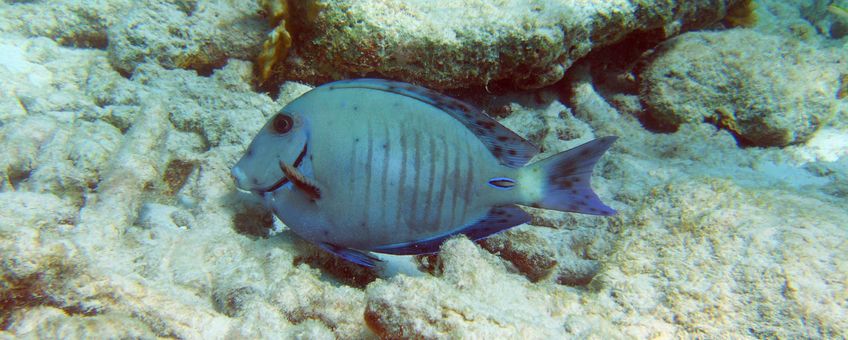
Dermal parasites on coral reef fish on Bonaire
Dutch Caribbean Nature Alliance (DCNA)Parasites are a naturally occurring component of coral reefs ecosystems. They directly affect their hosts’ survival, growth, behavior and reproductive ability. Parasites can play an important role in coral reef dynamics but where their numbers get out of balance they can have devastating impacts not only on their hosts but also on coral reef ecosystems as a whole.
Outbreaks of disease, such as white and black band disease, have had a dramatic impact on Caribbean coral reefs. The mass mortality of the black spiney urchins (Diadema antillarum) in the early 1980s had a devastating impact on reefs throughout the Caribbean, in some cases triggering phase shifts from coral to algal dominated reefs. Therefore potential outbreaks of infection or disease warrant special attention.

In response to concern expressed by the Ministry of Economics, visual “spot” surveys of over 16,000 reef fish were conducted at various sites on Bonaire in March 2015. Infection rates, measured by the number of infected fish species and the proportion of infected individuals, were found to be markedly higher on Bonaire than at sites on Curaçao.
The highest infection rates were found between the Salt Pier and Kralendijk amongst fish in shallow reef environments. The species worst affected were ocean surgeonfish (Acanthurus tractus), orange spotted filefish (Cantherhines pullus), smooth trunkfish (Lactophrys triqueter) and redband parrotfish (Sparisoma aurofrenatum).
By contrast no indication of dermal parasites were found on squirrelfish (Holocentrus adscensionis), French angelfish (Pomacantus paru) or grasby (Cephalopholis cruentata) and infection rates of under 1% were found amongst French grunt (Haemulon flavolineatum), bluehead wrasse (Thalassoma bifasciatum), schoolmaster (Lutjanus apdous), bicolour damselfish (Stegastus partitus), and yellow tail damselfish (Microspathodon chrysurus).
One possible explanation is that rates of infection are linked to water quality, particularly to raised nitrogen levels, which are an indication of eutrophic conditions believed to be caused by sewerage water outflow and brine leaking from the salt works.
Text: Dutch Caribbean Nature Alliance
Photo: Martin de Graaf, IMARES, Wageningen UR
